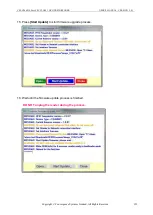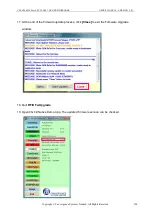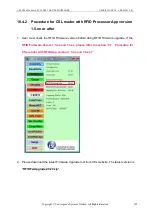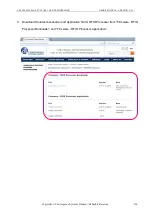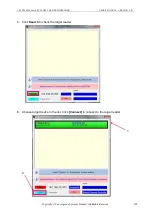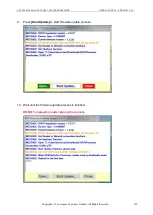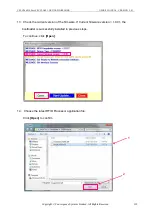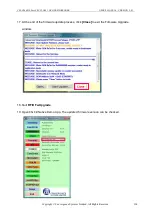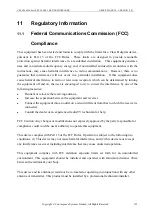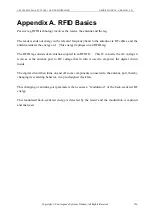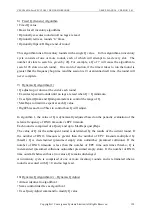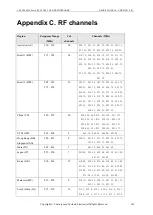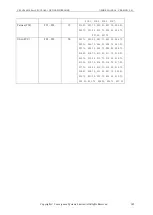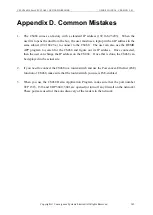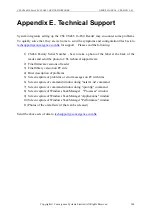
CSL CS468 16-Port EPC CLASS 1 GEN 2 RFID READER
USER'S MANUAL, VERSION 2.0.1
Copyright © Convergence Systems Limited, All Rights Reserved
137
Appendix B. Operation Profiles and
Gen2 Parameters
Link Profile
Different modulation profile can be selected by the user for different situation.
In CS468-3 (Japan) and CS468-1 (ETSI) readers, only profiles 0, 2, 3 and 5 are selectable.
The default setting is profile 2. It is also the recommended setting for most of the common
applications.
Profile
0
1
2
3
4
5
R-T Modulation DSB-ASK DSB-ASK PR-ASK PR-ASK DSB-ASK PR-ASK
Tari (μs)
25.00
12.50
25.00
25.00
6.25
25.00
R-T speed (kbps) 40
80
40
40
160
40
PIE
2:1
2:1
1.5:1
1.5:1
1.5:1
1.5:1
Pulse Width (uS) 12.50
6.25
12.50
12.50
3.13
12.50
T-R LF (kbps)
40
160
250
300
400
250
T-R Modulation FM0
Miller-2
Miller-4
Miller-4
FM0
Miller-2
Divide Ratio
8
8
64/3
64/3
8
64/3
T-R Data Rate
(kbps)
40
80
62.5
75
400
125
Q-Value
Q-value is a parameter that a reader uses to regulate the probability of Tag response. A reader
commands Tags in an inventory round to load a Q-bit random (pseudo-random) number into
their slot counter; the reader may also command Tags to decrement their slot counter. Tags
reply when the value in their slot counter (i.e. their slot) is zero. Q is an integer in the range (0,
15); the corresponding Tag-response probabilities range from 2
0
= 1 to 2
-15
= 0.000031.
It is usually recommended to set a Q-value that have the corresponding number of slots larger
than the exact maximum number of Tags to be read by the reader. For example, if there are 40
tags to be read by the reader, the Q-value is configured to 6, in which 2
Q
= 2
6
= 64 > 40.
In CS468, it consists of four main inventory algorithm (one fixed Q and three variable Q). The
variable Q algorithms differ in their mechanism for adjusting the Q values at the end of each
round. It also provides routines for the four tag access functions (read, write, kill and lock).

